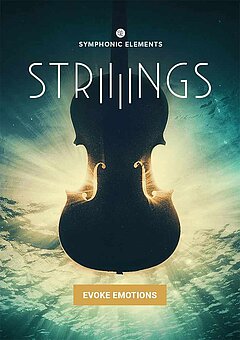The Music Producer’s Plugin Buying Guide
Where to find the exact plugins you’ll love most for your unique production style, while avoiding the ones that will sit unused for years to come.
JULY 11TH, 2021
There are tons of plugins on the market — but how do you know which tools you’ll use for years to come vs. the ones you’ll hardly touch? Let’s start by looking at what you already have available in your DAW. (And head over to ujam.com if you want to take advantage of our Summer Madness sales in its final week!)
- Stock plugins
- Sample libraries
- Compression
- Distortion
- Time-based effects and filters
- Granular synthesis
- Multi effects
- Wrapping up
Stock plugins
Firstly, you want to become as proficient as possible with your default DAW’s stock plugins — at some point, gear envy will rare its ugly head, and if you don’t know your stock plugins well, you’ll almost certainly buy something you essentially already have! Not all plugins are created equal, plus there are tons of benefits to stock plugins; since they run natively, they tend to integrate much more easily into the DAW, making your workflow faster overall.
Once you know you’re ready to expand your horizons into 3rd party plugins, there are more or less 2 reasons to do so: 1. a plugin does something your DAW can’t, or 2. it does something you can already do, but with better sound quality or a faster and smoother user experience. Your needs will vary a ton depending on which genres you regularly produce, but many of the suggestions below are useful across a wide range of genres!
Sample libraries
This is one plugin type for which your DAW’s stock plugins will almost always be lacklustre. They’re very expensive to produce as many have recorded full orchestras playing tens of thousands of different sounds, and you’ll likely always need to look for 3rd party options. UJAM’s STRIIIINGS and DRUMS cover your bases into two major sample library categories, then you have brass and woodwinds (Cinesamples is generally a great option there). If you compose acoustic or hybrid electronic music for films and/or video games, sample libraries are your bread and butter.
You could buy nothing but better sample libraries and never worry much about any other software purchases (this is a mild exaggeration, but not by as much as you think!). Realism is key here, as is flexibility, and you’ll find different audio companies possess an entirely different tone across nearly all their libraries, whether soft, harsh, warm or a range of other qualities. When you buy sample libraries, it’s unfortunately not enough to have only one string, woodwind, etc. library; layering multiple together is where the real magic happens, because the attacks, sustains, expression contours and everything else balance each other with incredible realism (assuming you’re using high-quality libraries).
Compression
For most purposes, stock compressors are enough to control your volume dynamics for any instrument; the case for 3rd party compressors is largely tied to extreme digital effects and recreations of famous hardware units that audio engineers love. You can pretty much always adjust the attack, release and threshold, but the meat is in the algorithm responsible for the transition into full compression and back to a normal level. This is different for every single compressor, and along with some subtle saturation, it’s a distinguishing factor between different hardware units.
Then of course, we have multiband compression, which many producers consider to be a non-negotiable part of their entire workflow (and by extension, Ableton Live’s ubiquitous ‘OTT’ preset) — the technique involves creating multiple frequency bands which each get compressed separately. This is helpful for smoothing out problem areas in the frequency spectrum and exerting extreme control over your sound where necessary. This is most relevant to EDM producers, since in other genres even a moderate amount of multiband compression can be way too much. For an extremely flexible multiband compression option, check out FabFilter’s Pro-MB; it’s quite transparent but can pump as hard as you need it to.
Distortion
You can have a ton of fun here. Perhaps more so than anything other type of audio plugin, you’ll find endless diversity amongst distortion units. Specifically, you’re looking for quality (doesn’t sound ‘trashy’ when you run audio through it, unless you want that specific effect) or a broad range of different modules to select from. Analog-modelled saturation typically falls into the quality category — you’re looking to create a specific sound, and you want to hear every possible nuance. If you’re mainly interested in sound design, you want as many different distortion modules as possible to choose from so you can increase your chances of getting to the sound you hear in your head.
Companies like Soundtoys and Slate Digital do an excellent job of accurately model real hardware, closely approximating the sound of real, specific units used in professional studios across the world but for a fraction of the cost (and without the mobility restrictions of hardware). If you want to infuse the sound of a live recording environment into your tracks, at some point analog-modelled plugins increasingly become a must. Without authentic emulations or classic, real, physical gear, your music will always seem to be missing something; this isn’t necessary for releasing tracks, nor should you treat it as such — but this type of plugin will instantly increase the perceived quality of your productions.
Other distortion plugins excel at providing a range of options, like Ohmicide. Having them in one plugin is extremely helpful when you want to demo more than 30 modules quickly to find just the right one, plus its quality is also quite high at the same time. If you create EDM, you’ll particularly enjoy multiband distortion, which allows you to treat different frequency ranges separately. Not only can you quickly create more complex sounds, you can also bypass distortion on the sub and keep your low and clean and tight.
Time-based effects and filters
Your DAW almost certainly has delays, phasers, flangers and choruses; if you’re resourceful, these will take you a long way, particularly when combined with other effects and plenty of automation. In particular, these are staples in rock (often to add color to the guitars) and heavy electronic music like riddim (to create a mechanical, robotic and futuristic feel by heavily manipulating plugin settings. Even the most basic plugins in this category are enough to get the job done, so the benefit of 3rd party plugins comes from unique sounds in their algorithms and odd utilities that set them apart.
For example, take Crystallizer from SoundToys; running anything through it will produce a glistening, fragmented delay that would require a ton of separate delays, pitch shifting and other stock plugins to come even close to emulating. Instead, if you have the funds, it’s perfect for a wide variety of uses, but especially EDM and other electronic genres.
Things get even more fun when you consider specialty filters like Kilohearts’ Disperser; it only affects phases, not the frequency content of the sound — this essentially means it smears everything around a certain frequency so that some parts of the spectrum are later than others, which is great for creating juicier basses and transient shaping if you’re feeling bold, it’s much easier to understand by simply trying it out than it is to only get the technical explanation.
Granular synthesis
This form of processing works by chopping up incoming audio into ‘grains’ in real time — each grain has a very short rise and fall in volume, ‘windowing’ the audio in each grain and pasting it in between other overlapping grains. Don’t worry if that’s confusing right now; granular synthesis is a difficult idea to conceptualize initially. However, its use is very practical, particularly for creating pad textures and atmospheric effects. Combined with a long reverb (8 seconds or more, perhaps), granular synthesis enables you to take a dull, mundane sound and transform it into a morphing soundscape entirely unlike the original.
Steinberg’s Padshop is a fantastic and simple granular synthesizer that allows you to quickly get started and allow you to do everything from hearing individual grain windowing, all the way up to creating insanely complex sounds you’ll go crazy for. If you’re new to granular synthesis but are intrigued by the possibilities, Padshop is a great starting point! Crystallizer (mentioned above) also has a granular synthesis engine within, which is how it achieves such a gorgeous sparkling effect that builds and cascades outward.
Multi effects
Lastly, we have a combination of multiple other effect types stated above. There are numerous plugins designed to create a palette of different, interchangeable effects, though some plugins choose to provide a simpler UI with fewer confusing settings, specifically with the goal of reducing one grand effect chain into a single ‘multi effect’ to get you to your desired sound as efficiently as possible. These are fantastic for saving time, and UJAM’s Finisher series in particular will keep you reaching to a pre-built chain so you can create a polished idea in as little time as possible.
Wrapping up
And with that, you should have plenty to get started with! Be sure to learn every stock plugin in your DAW as deeply as you can first, since that will help you make more informed decisions as to which new plugins will make the biggest impact on your music, while helping you avoid doubling up in areas you can cover already.
There are countless excellent plugins on the market, so it’s critical to know what outcomes you want to achieve and filter your buying decisions through that. Both your wallet and your music will thank you in the long term — and if you want to upgrade your rig with new gear outside of plugins, check out our companion article The Buyer’s Guide for Music Producers!
Stay up to date
Sign up and we’ll send you an e-mail with product news and helpful stuff every now and then. You may unsubscribe at any time.
Defy Limits
We develop software solutions that enable people to create, consume and interact with music.






